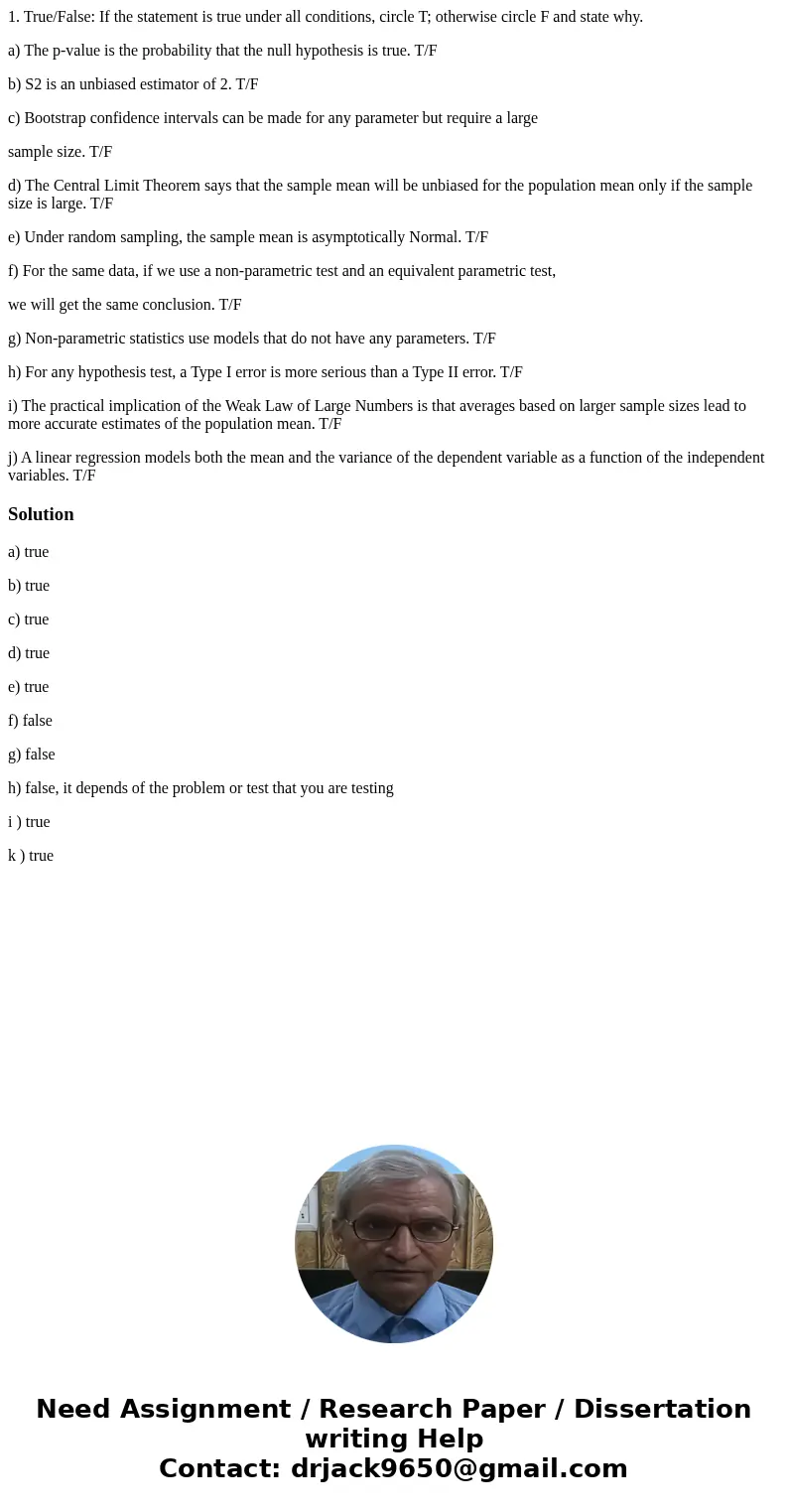1 TrueFalse If the statement is true under all conditions ci
1. True/False: If the statement is true under all conditions, circle T; otherwise circle F and state why.
a) The p-value is the probability that the null hypothesis is true. T/F
b) S2 is an unbiased estimator of 2. T/F
c) Bootstrap confidence intervals can be made for any parameter but require a large
sample size. T/F
d) The Central Limit Theorem says that the sample mean will be unbiased for the population mean only if the sample size is large. T/F
e) Under random sampling, the sample mean is asymptotically Normal. T/F
f) For the same data, if we use a non-parametric test and an equivalent parametric test,
we will get the same conclusion. T/F
g) Non-parametric statistics use models that do not have any parameters. T/F
h) For any hypothesis test, a Type I error is more serious than a Type II error. T/F
i) The practical implication of the Weak Law of Large Numbers is that averages based on larger sample sizes lead to more accurate estimates of the population mean. T/F
j) A linear regression models both the mean and the variance of the dependent variable as a function of the independent variables. T/F
Solution
a) true
b) true
c) true
d) true
e) true
f) false
g) false
h) false, it depends of the problem or test that you are testing
i ) true
k ) true

 Homework Sourse
Homework Sourse